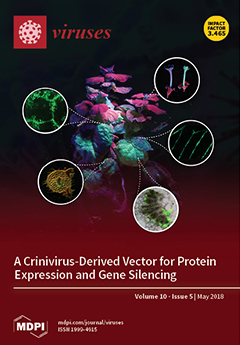Avian influenza virus subtype H9N2 (H9N2 AIV) has caused significant losses to the poultry industry due to the high mortality associated with secondary infections attributable to
E. coli. This study tries to address the underlying secondary mechanisms after H9N2 AIV infection. Initially,
[...] Read more.
Avian influenza virus subtype H9N2 (H9N2 AIV) has caused significant losses to the poultry industry due to the high mortality associated with secondary infections attributable to
E. coli. This study tries to address the underlying secondary mechanisms after H9N2 AIV infection. Initially, nine day-old specific pathogen-free chickens were assigned to control (uninfected) and H9N2-infected groups, respectively. Using Illumina sequencing, histological examination, and quantitative real-time PCR, it was found that H9N2 AIV caused intestinal microbiota disorder, injury, and inflammatory damage to the intestinal mucosa. Notably, the genera
Escherichia, especially
E. coli, significantly increased (
p < 0.01) at five days post-infection (dpi), while
Lactobacillus,
Enterococcus, and other probiotic organisms were significantly reduced (
p < 0.01). Simultaneously, the mRNA expression of tight junction proteins (
ZO-1, claudin 3, and occludin), TFF2, and Muc2 were significantly reduced (
p < 0.01), indicating the destruction of the intestinal epithelial cell tight junctions and the damage of mucin layer construction. Moreover, the mRNA expression of proinflammatory cytokines IFN-γ, IL-22, IFN-α, and IL-17A in intestinal epithelial cells were significantly upregulated, resulting in the inflammatory response and intestinal injury. Our findings may provide a theoretical basis for observed gastroenteritis-like symptoms such as diarrhea and secondary
E. coli infection following H9N2 AIV infection.
Full article






